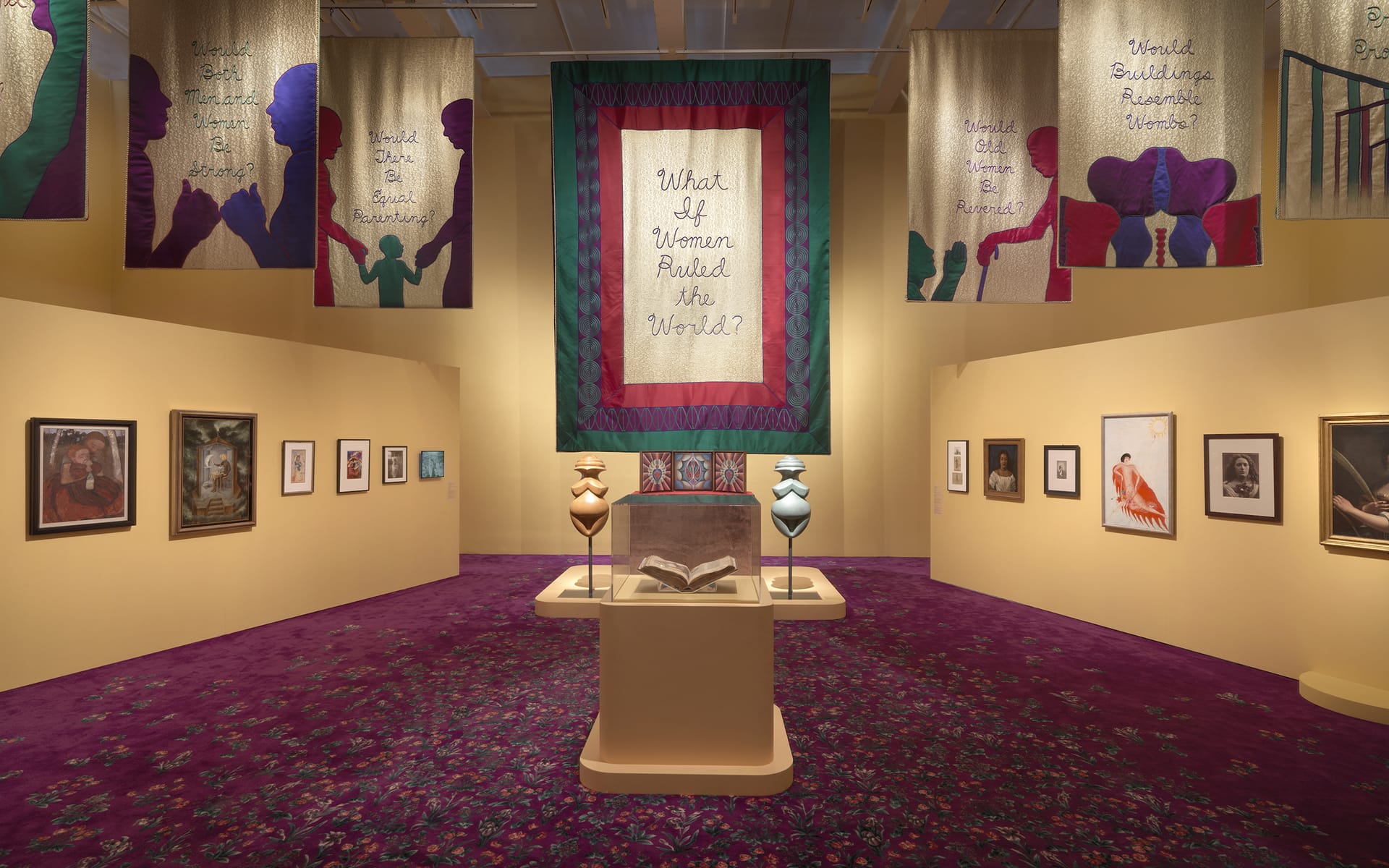5 Standout Works from Judy Chicago’s Groundbreaking Career
Galerie looks back on key works by this pioneering feminist artist, who is the subject of a must-see retrospective now on view at the New Museum

On the occasion of “Herstory,” the most comprehensive museum survey in New York of the six-decade career of Judy Chicago, currently on display at the New Museum, Galerie looks back on key works by this groundbreaking feminist artist

1. Judy Chicago, Birth Hood, 1965/2011
Birth Hood is one of three works on display from Chicago’s 1964-65 Hoods series. After completing her studies at UCLA, the artist enrolled in an auto-body school, the only woman among 250 male students, and created the series, executed on mass-produced car hoods, using sprayed automotive lacquer. It became a “prescient indictment of Minimalism’s stylistic link to masculinist personas, despite its claims to objective neutrality,” the New Museum said.

2. Judy Chicago, Immolation, 1972 (printed 2018)
According to the Smithsonian American Art Museum, which owns a print of this 1972 photo, its title and the female nude’s cross-legged pose bring to mind a famous photograph taken in Saigon in 1963. In that photo, a Vietnamese Buddhist monk, Thich Quang Duc, burns himself to death, calling upon Buddhist religious leaders and laypeople ”to organize in solidarity to make sacrifices to protect” their religion. The Smithsonian also suggests the colorful smoke in Chicago’s photo might evoke the Vietnam War’s “rainbow herbicides,” such as Agent Orange, used by U.S. forces to defoliate combat zones. According to exhibition curator Gary Carrion-Murayari, Chicago gained proficiency in the male-dominated field of pyrotechnics to create this and related works.

3. Design by Judy Chicago, filet crochet by Dolly Kaminski, Birth, 1984
This 20-foot-long work is the largest in Chicago’s Birth Project featuring art created by women from across the United States in needlework, which the New Museum calls a “stereotypically gendered medium, dismissed by art circles for centuries, (employed in the project) to foreground the social realities of women around the world.” This piece depicts a birthing woman on her back.

4. Judy Chicago and Donald Woodman, Rainbow Shabbat, 1992
This stained-glass window is part of the Holocaust Project, begun by Chicago and her husband, photographer Donald Woodman, to understand, she said, “the evil and cruelty that seem to live so closely under the surface of civilizations, both past and present… Confronting and trying to understand the Holocaust, as painful as that might be, can lead to a greatly expanded understanding of the world in which we live.” The window’s subjects—people of various ages, genders and backgrounds participating in a Friday night, Jewish Sabbath dinner—are depicted in what the museum calls “a style of figurative history painting.”

5. Judy Chicago, ten banners from The Female Divine series, 2020
These banners—applique, embroidery, brocade and braiding on velvet backing—are ten of 21 that Chicago created for an installation in the garden of Paris’s Rodin Museum for the presentation of Dior’s spring 2020 collection. Designed by Chicago in her signature cursive handwriting and sewn by women at the Chanakya School of Craft in Mumbai, they pose questions about what a women-led world might look like.
Chicago told Galerie that seeing the New Museum’s “exhibition come together has allowed me to realize that one reason my work has been so marginalized for so long is that the multiple contexts of my work have been unknown to the art world. I feel that my story, along with (those of) so many other women artists, is finally being told, but it’s still only the beginning.”
“Judy Chicago: Herstory” is on view through March 3, 2024, at the New Museum, 235 Bowery, New York.